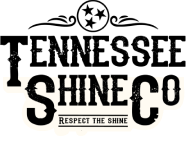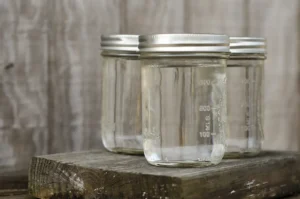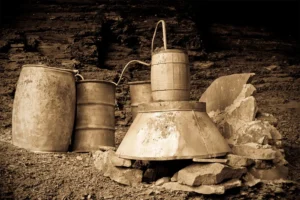history of moonshine
In the South, tracking down and drinking moonshine is a rite of passage. Whether it’s the booze’s rebellious history or its dangerous reputation. Moonshine has cemented a place in the culture at large. Moonshine defines as “whiskey or other strong alcoholic drinks made and sold illegally.” With that definition, it may be confusing to walk into liquor stores and find booze labeled as moonshine. Part of the problem lies in the lack of federal requirements for labeling something as moonshine. Unlike whiskey, which you must from grain, distilled and bottled at a certain alcohol content, and aged in oak, ‘shine has no equal. Like vodka, you can make it from anything fermentable: fruit, sugar, grain, or milk. Like vodka, there’s no upper limit on its alcohol content. Unless you want to describe it as white whiskey on the label, you can make it any way you please. So, despite what you might have read in the OED, legally made hooch labeled “moonshine” is all over the place. Despite its super Southern connotation, hooch isn’t only a Southern drink. The term moonshine has been around since the late 15th century. But, it was first used to refer to liquor in the 18th century in England. The American roots of the practice have their origins in frontier life in Pennsylvania. Also, other grain-producing states. At the time, farms with grain mills would distill their excess product so that it wouldn’t spoil. Back then, whiskey was even used in some places as currency.
history
In 1791, the federal government imposed a tax on liquor made in the country, known as the “whiskey tax.” For the next three years, distillers held off the tax collectors by less-than-legal means. This brought a U.S. marshal to Pennsylvania to collect the taxes owed. More than 500 men attacked the area’s tax inspector general’s home. Their commander was then killed, which inspired a protest of nearly6000 people. The tax repealed in 1801, and the events from the decade prior came to be the Whiskey Rebellion. A lot of the lore and legend surrounding moonshine is true. Bad batches or certain production techniques (like distilling in car radiators) could result in liquor that could make you go blind—or worse. Some moonshiners claim that these stories were an effort to discredit their work. Legal producers differ. Either way, the federal government commissioned Louis Armstrong to record radio ads about the dangers of drinking it. You should see all the Moonshine we have in our store. Don’t confuse moonshiners with bootleggers. Moonshiners make the liquor, while bootleggers smuggle it. The term bootlegger refers to the habit of hiding flasks in the boot tops around the 1880s. But, with the introduction of cars, it came to mean anyone who smuggled booze. Mechanics found ways to soup up engines and modify cars to hide and transport as much moonshine as possible. In running from the law, these whiskey runners acquired some serious driving skills. On their off days, they’d race against each other, a pastime that would eventually breed NASCAR. The two were so closely linked, in fact, that a moonshiner gave seed money for NASCAR to its founder Bill France. Another well-known link is Robert Glenn Johnson, better known as Junior Johnson. As the son of a notorious moonshiner, this former driver and NASCAR team owner recently partnered with a North Carolina-based distillery to produce “Midnight Moon.” Whether you call it “shine”, rotgut, white lightning, firewater, skull pop, mountain dew, or moonshine. Its rebellious history and contentious present make it a helluva drink. If you want to learn more about the History of Moonshine, please follow Tennessee Shine. CO.




